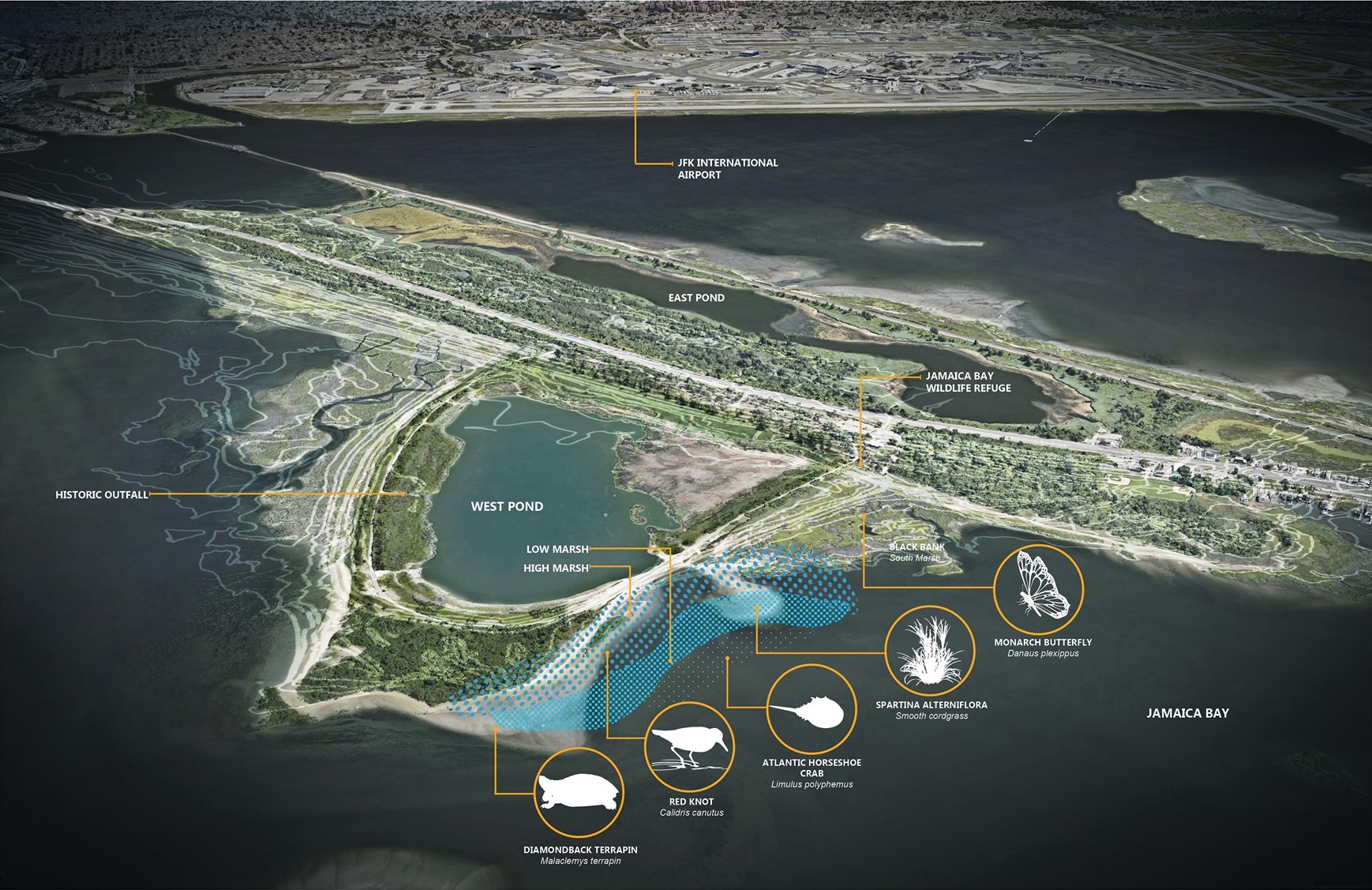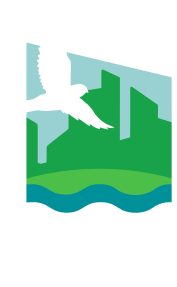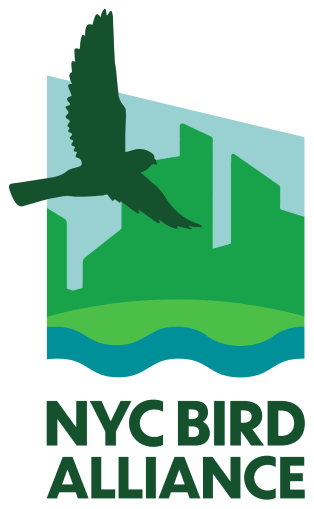The Living Shoreline of Jamaica Bay
category: CONSERVATIONURBAN BIRD CALL

A design plan by Dirtworks Landscape Architecture lays out the major habitat areas of the Living Shoreline project and the primary species of concern that are likely to benefit. Project design by Dirtworks Landscape Architecture, courtesy of Jamaica Bay-Rockaway Parks Conservancy
THE LIVING SHORELINE OF JAMAICA BAY
This article appears in the spring 2022 issue of The Urban Audubon.
By Carol Peace Robins
In October of 2012, New York City was hit hard by Hurricane Sandy, leaving vast flood and wind damage in its wake. It destroyed lives and livelihoods, homes, businesses, and city infrastructure.
But Nature also wreaked havoc on Nature.
One of the natural areas hardest hit was the Jamaica Bay Wildlife Refuge’s West Pond. Sandy punched through a narrow segment of shoreline separating the pond from Jamaica Bay, creating a deep breach in its popular Loop Trail and allowing sea water into what had been a freshwater (tending towards brackish) pond. The breach impacted both the birds that depend on sources of fresh water and the birders who use the trail.
NYC Bird Alliance led early advocacy efforts in favor of repairing the breach, through creation of the West Pond and Gateway Taskforce, coordination of the West Pond Birders Coalition, and publication of a restoration plan for the West Pond in 2013. The breach repair took some time—five years, to be precise. But at long last, in 2017, the National Park Service (NPS) re-enclosed the 45-acre pond with a firm earthen dike, restoring the Loop Trail. More extensive restoration would require continued efforts and collaboration among local stakeholders, however.
In May 2019, Jamaica Bay-Rockaway Parks Conservancy (JBRPC), in partnership with NPS and with the support of long-standing local conservation organizations Jamaica Bay Ecowatchers and American Littoral Society, contracted with Dirtworks Landscape Architecture, Rippled Waters Engineering, and Great Ecology to create and execute a plan for a “living shoreline.” This all-natural infrastructure is designed to protect the area from further storm damage and establish a healthy, welcoming environment for the area’s fish, birds, turtles, and other wild creatures—as well as for the humans who enjoy the West Pond’s rich birdlife. Even more important, the project will help to purify water, buffer flooding, reduce erosion, and store carbon.
Constructing a living shoreline is a complicated endeavor. In this case, the design called for planting 200,000 native grasses and shrubs, restoring 2,600 linear feet of shoreline with 51,000 cubic yards of sand, and creating 38 breakwater structures out of 100 discarded Christmas trees, 15 coconut fiber coir logs, and 5,000 oyster shells provided by the Billion Oyster Project. Many volunteers helped by planting seedlings and bundling oyster shells in biodegradable bags.
On November 19, 2021, on a bright sunny day with gusts of wind so strong they blew hats off some of the National Park Rangers, it was time for the ribbon cutting ceremony. Jennifer Nersesian, superintendent of Gateway National Recreation Area, presided over the ceremony, joined by JBRPC Executive Director Alex Zablocki and many others. Nersesian’s remarks celebrated the nine new, beautiful, and resilient acres of marsh habitat, along with the protection of the West Pond, for the area’s wildlife and the nature enthusiasts who enjoy it all:
“It has been quite the journey to get here since Hurricane Sandy breached the pond just over nine years ago. With support, we were able to repair the breach. We did it knowing with climate change and sea level rise, it might not last forever, but for the millions of people that it would serve in the interim, it was worth the investment. Today’s celebration symbolizes something even greater. It moves us beyond coming back to where we were before the hurricane. It propels us into the future. The Living Shoreline Project shows that rather than trying to fight nature, we’re learning to embrace it.”



